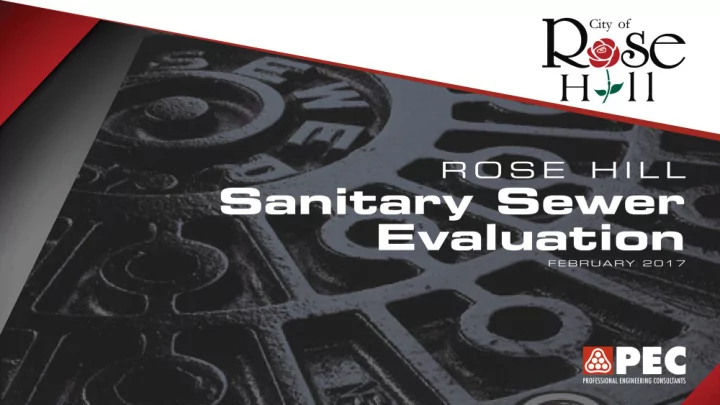

Importance of Sewer Evaluation ► Older sewer lines tend to develop deficiencies ► Sewer line deficiencies can cause: Decreased sewer capacity Leakage of sewage into environment Increased infiltration and inflow Higher treatment costs Sewer back-up into homes/businesses ► Evaluation provides database of existing conditions and develops plan for improvements
Project Scope ► City to conduct sewer line inspections ► Review/Evaluate sewer inspection tapes and logs ► Review rehabilitation methods and provide recommendations ► Prioritize necessary improvements ► Prepare map of proposed improvements ► Develop cost estimates
Inspection Process ► City contracted with Mayer Specialty Services for inspection ► 73 sewer lines included ► Concentrated on known areas of older lines ► Majority of lines are vitrified clay
Possible Deficiencies ► Broken Pipe/Hole Void ► Collapsed Pipe ► Intruding Tap ► Fractures ► Sag ► Root Intrusion ► Offset Joints
Table of Pipe Deficiencies
Rehabilitation Methods ► Cured-in-Place Liners (CIPP) Trenchless installation of polyester sleeve with resin Recommended for existing pipe in fair condition ► Full Replacement (Pipe Reaming/Bursting) Trenchless installation to break apart existing pipe and pull new pipe Usually used when upsizing pipe ► Full Replacement (Open-Cut) Cost greatly effected by surface conditions ► Point Repairs Replacement of short section of pipe via open-cut Cost greatly effected by surface conditions
Recommended Improvements ► Per Sewer Master Plan – no required upsizing ► “Critical” Point Repair – will not allow for CIPP ► “Minor” Point Repair – can alternatively be addressed with CIPP ► Recommended repair determined by weighing cost of alternatives Example: This location of fractured pipe is classified as a “minor” point repair. The deficiency can be addressed with any of the four methods of rehabilitation. However, taking into account the remaining condition of the full length of pipe, the most cost effective option is recommended.
Prioritization of Recommended Improvements ► First prioritized by overall condition of pipe ► Priority 1 – Most severely damaged sewer lines ► Priority 2 – All remaining lines with “critical” point repairs or lining ► Priority 3 – All remaining lines with “minor” point repairs ► Further evaluated based on function and location in the overall system
Priority 1 Examples
Priority Map
Recommended Timeframe ► Priority 1 Improvements: Immediately or as soon as budget will allow ► Priority 2 Improvements: 1-3 years ► Priority 3 Improvements: 5-10 years or re-evaluate in 7-8 years ► Inspections on additional sewer lines over the next few years
Cost Estimates ► Developed for each separate sewer line ► Typical costs based on repair type ► Included $5,000 for each manhole for rehabilitation Estimated Cost of Recommended Repairs Priority Level Total Cost Priority 1 Projects $213,520 Priority 2 Projects $499,330 Priority 3 Projects $220,900
Recommend
More recommend